











This page is best viewed in
1024x768

|
Humans: Soran, Haldar
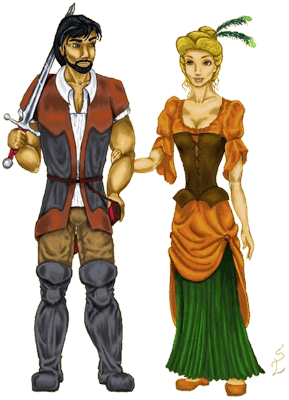
The Haldar
The broken human peoples took flight from war on Deagerad. Following the fall of their old Kingdom they have started anew on the South-Eastern shores of the Continent of Berkatan.
Culture and Lifestyle:
Following what they perceived as abandonment by the Gods, the Haldar are of little faith in the Divine. Instead, money and trade has become the driving force. Six great trade houses form the backbone of the city of Haldun and the citizens try to eke out an existence working under the effective rule of these Houses, whilst they rebuild their shattered society.
In the half-century since arriving, they have made much progress, constructing a grand city (Haldun), establishing trade, farms and industry with which the economic wheel keeps in motion between all the races of this new land.
However, in the seedy and lawless streets, there are a number of folk that live outside the authority of the Houses, some are The Bannermen, noble knights of a past age and loyal to Prince Thomas X, whilst others take the illicit route of working for the many Mercenary Guilds or Thieves Guilds.
Religion and Faith:
The Gods abandoned the Haldar during the battles with Soros on Deagerad. As such, many Haldar have in turn turned their backs on faith or worship. Though there still remain a few that, for one reason or another seek to rekindle the powers of the Gods. Priests and holy men are for the most part, merely ignored or considered a lost cause, yet they are numerous enough to have erected various shrines where they may continue to pay homage to The Five non-responsive Gods that were once held in such high veneration.
Naming:
Haldar are named by both parents at birth. If the father has a trade, sons are usually taught the trade and adopt the name as a suffix to the name given by their parents. It is not unusual for many male descendants in turn to all possess the same name. Daughters are often decorated with other names, such as the names of flowers or other things of beauty in the belief it will gain them a greater chance of marriage into a better standing. Well-known and reputable folk are often given titles and names according to deeds they have accomplished. In marriage, traditionally a bride will take her husbands' name.
The Nobility maintain their family name regardless wherever possible, although many instances of lesser nobles and distant relations have lead to a dilution of once noble names becoming dispersed throughout the peasantry.
Appearance:
Physically the Haldar come in all sort of hair colours and fair skin, however often dark skinned people are also found in the city, but mostly as travellers from far away countries. Though small shrines occasionally make their way into the city of Haldun, the people of Haldun are generally not religious in mindset as they believe the Gods have abandoned them.
The Soran
Physically identical to the Haldar, the Soran differ greatly in other ways. They are a godless people, methodical, organised and almost robotic in their clockwork culture. A people devoted entirely to magecraft and learning, they generally have little time nor interest in other pursuits. This strict mindset is enforced on the Soran from birth and without means of experiencing anything different, is readily accepted and adapted to. Three things mark priorities for the Soran, these are fundaments to every part of Soran lifestyle: Magic, Knowledge and Order.
The people of Soros despise religion and the concept of gods. Believing omnipotent or omniscient beings an implausibility and a deterrent to human advancement.
The social castes of the Soros Capital are divided into departments called Circles (as circles and spheres are often used as analogues for perfection and the Soran are nothing if not arrogant). Each circle is dedicated to a certain aspect of Soran governance and is headed by a single member of The Eldritch Council. Generally, if an Eldritch needs to be replaced, the Council chooses the most suitable of Praetors or Archmages from within that Councilor's circle. Occasionally, a particularly promising rising star may be picked from another circle.
Naming:
The majority of Soran from the mainland maintain the naming traditions of their ancestors, with typically human names, however, throughout their intensive study, many Soran for reasons of grandeur, preference or by association by others acquire exaggerated or powerful-sounding names, such as 'Erazil Runeforge'
Age
Soran society is rigidly structured so that as the Soran grows older, their training and education in the arcane arts increases. Therefore, age is rarely referred to, but is equivalent by magical rank until such time as they have finished their adepts' qualification at the age of 15, and then can progress more rapidly or more slowly. Soran do not tend to celebrate or even mention birthdays, such things are trivial are lieu of the Eldritch's immortality and have little meaning in society. Rank counts, age do not.
Elves: Aredhel (Forest Elves), Almardhel (City Elves)
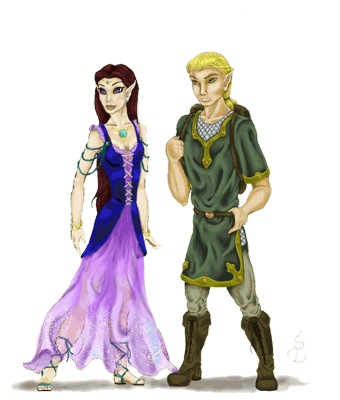
Elves have happily existed alongside their neighbours for as long as anyone cares to remember. While two castes of elves exist, the two subcultures do still consider themselves part of one race. Meetings between the two cultures are usually warm and friendly occasions.
Aredhel:
Old Haldun Era, Deagerad
The Aredhel are benevolent humble people who prefer a rural way of life. As content forest dwellers they existed peacefully alongside the other races for thousands of years. Three great cities were spread across the forests of the continent; Lithonael, Naertaal and Riadwen. Elven traders would frequently travel beyond their borders to barter goods with their neighbours. It was not uncommon to for traders of other races to enter the elven cities either.
Haldun Era, Berkatan
After the war of the four nations, only Naertaal managed to evacuate any number of its people to Berkatan, though the number was still less than a thousand. As such, the Aredhel of Haldun can be prone to fits of sadness over their lost kin, though they make every effort to put on a brave face. The surviving elders of Naertaal wander Berkatan like nomads at present, though rumour has it that they are looking for a place to settle. When in Haldun, it is common for an Aredhel elf to find welcome with the Almardhel.
Almardhel:
Old Haldun Era, Deagerad
Elves have always been comfortable traders and travellers. Just over a thousand years ago the elven nation decided to further improve relations with Haldun, moving some of its people within Haldun's city with the blessing of Haldun's monarch. While it was overwhelming at first, the elves slowly adjusted to the new way of life. Many turned to the arts. Bowyers and fletchers found their work in high demand as well. The Aredhel soon gave their kin the name Almardhel, which translates roughly to 'wealthy kin.'
New Era, Berkatan
In Haldun, the Almardhel have created their own district within the city, which attracts many visitors looking to acquire a rare item of elven craft. While saddened by the loss of so many lives on Deagerad, the Almardhel of Haldun look towards the future with optimism and hope.
Elven Appearance:
Aredhel and Almardhel elves are of similar appearance, with natural skin and hair tones that would be considered normal among humans. Over the years the Almardhel have developed a slightly paler appearance to their skin. The elves of Lithonael have a more tanned appearance, but they have not been seen since the war of four nations.
Age:
No elf has individual birthdays; instead they observe an annual celebration of life at midsummer to mark the passing of a year. As such they will say '132 summers old' when speaking of their age. Elves mature anywhere between 90 and 100 years of age. An elf is not considered adult by their people until they reach 100 summers.
The usual lifespan of an elf is between 400 and 500 years. It has been observed that the life force of the Almardhel tends to fade towards the lower end of this scale.
When and elf dies naturally, their bodies slowly fade into beads of dull light which then fly off on the wind. It is believed that this is their soul fading into The Mirror realm to be with the gods. Death is a very personal time for an elf, and they usually find a quiet isolated place to slip away from life. Elves killed on the battlefield do not fade in this way, leading to the speculation of what happens to their souls.
Cultural notes (Branding and Tattoos):
Elves tend not to have permanent markings in the form of brands or tattoos. Hair is usually kept long for men and women, though some woodsmen shun this norm in the name of practicality.
Religion:
All elves revere The Mother (Damihra) as the creator and protector of life. The Aredhel are more spiritual of the two castes, paying homage to a number of different spirits in their day to day comings and goings.
Names:
Naming of an elven babe is an honour given to the father. The male gives the infant a name which he hopes will inspire the kind of person the child will become. Second names are hereditary family names passed down from the father.
Orcs: Mok'Tar
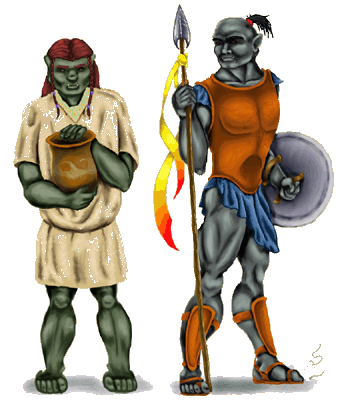
Mok'Tar, a name lost in antiquity, yet holds a special reverence for the Orc tribes that name themselves, their people and their residence by this same name.
Mok'Tar are typically greyish-green in skin colour and taller and more muscular than man, and with protruding fangs, snoutish noses and other exaggerated features. Such features are lessened in Da'an Goraz, to varying degrees.
The majority of Mok'Tar dwell in the town of Mok'Tar at the base of the Great Wall. Here they maintain a level of self-sufficiency, providing the Da'Kar with supplies but occasionally trading with the settlers as they brought new technologies and cultural aspects from their old lands. Deeply superstitious and with a grand spoken history, most notably their belief that once the wall is truly safe, a sign shall be given them and they will find the way to a new homeland of their own. The Mok'Tar are a proud and noble race.
The Mok'tar Sadr'rak, a title given to the strongest and most proficient warriors have been the guardians of the Great Wall for generations past.
To this day the Sadr'rak guard the wall with honour, overseeing and marshalling the Da'Kar. Two times each year, in spring and in fall, the Sadr'rak holds games to determine who may be chosen from the Da'kar to join the Sadr'rak. Those who are so honoured, leave their clan, their family and any ambitions, never to return. Those who they join at the wall, become their family. Some even say the wall itself is� family to them.
The Da'Kar Hazarad, Defenders of The Wall: NPC Only.
Only the strongest and most dedicated of the Mok'Tar can join the ranks of Da'Kar, and then their main priority in life must be to guard the wall, placing all other desires and duties secondary to this directive. In recent times, Even some Da'an Goraz have been named Da'Kar.
The Goraz
These are the Mok'Tar that choose not to become Da'Kar, or are unsuitable due to lack of strength or other feats. The Goraz Live out normal lives (mainly in Mok'Tar town) and pursuie a range of occupations from hunters, fishermen and farmers, to crude pottery making, smithing and carpentry. Tribal art and dress is also made in Mok'Tar and worn by most inhabitants.
Da'an Goraz
These are the halfbreed mongrels of Mok'Tar and other humanoids that arrived from across the ocean, or are descended from those. Dwelling in equal parts with either parent race, they are generally welcomed and acknowledged as Goraz or their other racial background. The Da'an Goraz that have not wished to or not been able to join the Da'Kar have been greatly appreciated for their impressive strength and skills at hunting and labouring.
Age:
Mok'Tar Orcs typically live for around 50 years. The rare ones that may live to 70 or 80 become grey-haired and are automatically elevated to the status of elder at this point. An Orc or Half-Orc of Mok'Tar in their fifteenth year is no longer dependant on the parenthood of the clan and is considered an adult. Typically, to prove their adulthood, the young adult would be required to prove their strength, independence, wisdom or skills in some manner.
Culture and Lifestyle:
A male-dominant society, Mok'Tar women tend to make arts and crafts, jewellery and clothing whilst minding the homes and young, whilst the males spend their time out toiling in the fields farming and hunting, fishing or building. It is the males' responsibility to provide food and protection for all the women in the community.
As with their tribal ancestors, there is no distinct family unit for the Mok'Tar. The entire tribe is a single family. Inter breeding and polygamy is commonplace.
Names:
Young are given a birth name by their mothers. This is an Orcish name and is often derived from the mothers' name, as the father is not often specifically known. The male Orc that takes most of a fatherly role in that child's life will bequeath them a task name in the hope the spirits will empower the child with the desired effects.
An example of a task name is Charging Bull. A young Orc named such is then believed to be connected with a spirit of the Bull.
Religion:
The Mok'Tar have been without religion for uncountable centuries, relying much more on the wisdom of theirInter breeding and the omens and prophecies of the elders who also lead and represent the village.
Gnomes: Gulcher, City Gnomes
To see the influence the Gnomes have on a man's life, he need only flip a coin. The race has always possessed a love of gold, much like the folk with whom they share the glittering metal. They are the central pillar on which Haldun's economy resides, and without which House Borianas could not exist. The finest of metallurgists, jewel crafters and gold diggers all come from Gnomish stock. From the small mining town of Golden Gulch where the more enterprising Gnomes reside, to the bankers and merchants of the Gnomes who chose to reside in Haldun itself, the race has a stake in every gold piece that changes hands.
They are well aware of the greed of their fellow man though, and frequently employ illusionary magics on their vaults and mines to prevent unwanted guests from getting what is rightfully theirs. To break into a Gnome's vault is to step into a dream world which is all too easy to never wake from...
Gulcher:
The gnomes of Golden Gulch are, much like the original explorers who founded it, far more adventurous and physically adept than their city bound cousins. They tend to be callous and foolhardy aswell though, often leaping before they look. Also they have a great sense of humour, more than anything they enjoy pranks, jokes, puns and tricks.
City Gnomes:
The gnomes of Haldun, on the other hand, are shrewd businessmen, taking full advantage of the raw materials provided by their gulch cousins. They tend to look at something from every angle, and tend to deliberate over even the smallest decision for long periods of time. Although this means they can often come to some very good business decisions, they also tend to lack initiative when quick action is demanded of them.
While the two division of gnome tend to look down on one another (The gulchers believing their city counterparts to be slow, cowardly and not ever having done a hard day's work in their life, the city gnomes believing that their foolhardy cousins lack the intellegence for rational decision making) it is those few gnomes who have both the wisdom and courage of both that tend to rise to leadership roles within their respective communities.
Culture and Lifestyle:
The Gnomes of Golden Gulch live simple lives in the harsh and remote settlement, making the most of the resources they can trade with their gold for the lack of many obtainable necessities deep in the mountains. The majority of a gnomes' lifetime is spent hard at work, though such work pays off, as it is key to a surviving and healthy family. Both male and female Gulchers share in various aspects of the workforce which is dominated by the mining, processing and crafting then sale of gold.
Because of their prominent noses the gnomes are very talented alchemists. As so the gnomes export many fascinating potions to both Soros and Haldun. Often their skills within alchemy is also abused for pranks and tricks.
Age:
Gulchers typically live for 250-300 years. It would be higher, except The conditions of the remote and hostile mountain environment make for a high mortality rate amongst the young and elderly. For the first 40 years of their lives, the Gulchers are apprenticed and taught all their is to know about the mining, smelting and production of gold and other valuable seams found in the Morgaion Mountains. On reaching their 40th birth year, a Gulcher is considered qualified.
Halflings: Otere (From across the sea), Nitari (Haldun Halflings)
Halfling history seems always tied with that of Haldun, living among and about the Humans as far as known history, though hardly ever even as a footnote. Small communities could be found among Old Haldun�s territory and the occasional Halfling would make himself known and remembered. The two subcultures of Halfling were once one, though whether the Otere branched from the Nitari or the Nitari branched from the Otere is often speculated.
Otere:
The Otere are a simple people who have long held to farming and hunting as a way of life. Halflings of the land, they can be commonly found serving in the fields of House Baleny as well as elsewhere in New Haldun where determined workers are needed regardless of stature. They hold strong ties of community and focus in matters of the day to day survival and passing of the seasons, Otere are seen as a quiet grounded folk who take the day�s joys and troubles with the same lighthearted spirit. Harking back to their days living outside of Old Haldun, many Otere are skilled hunters and scouts, taking pride in a silent hunt of what is most often larger prey.
Nitari:
Nitari are Halfling who have well taken to life in the city, both in Old Haldun and since the days of the crossing. They thrive on the hustle, bustle, and distractions of others. Though it would be unfair to say that the Nitari are all thieves and spies, their skills and ways make such trades open to them. Sharing the lighthearted nature of other Halflings but lacking any great communal spirit, most Nitari believe keenly in survival of the fittest. Living and working all about in New Haldun, The Nitari have a curiosity which sees them into and out of trouble as often as it can see them focused on a task at hand.
Halfling Appearance:
Otere and Nitari being genetically identical, having almost entirely come from the same stock.
Average height is a meter or three feet
Average weight is 13 kg or 30 lbs (Those of a more plump disposition being slightly heavier)
Hair colors range from red to brown to black, rarely blonde
Skin color is most often white, usually tanned according to sun exposure, or pale according to lack of it.
Otere culture often holds ritual brandings (usually linked to a ceremony) and Nitari are known to tattoo themselves.
Nitari and Otere are both the singular and plural form of the noun. �Halfling� apply to the group as a whole and all will readily respond to it.
Age:
Otere do not celebrate birthdays, but hold an annual celebration at the summer solstice for all children born that year. Children born on the day of the solstice are said to be marked with destiny.
Otere are seen as children, given chores and little responsibility, until their seventeenth solstice. During that festival they choose a trade. At this point they will often follow an adult family member (or mentor) around being taught the responsibilities and ways of whatever trade they so choose. At their twenty seventh solstice (ten years) they are considered a capable member, professional at their chosen trade, and allowed to marry. At this ceremony of Adulthood they are allowed to brand their flesh if they so choose, hot irons worked into various designs can mark the Otere as a scout, hunter, servant of the gods, �Of the earth�, etc.
Otere who do not die before they are forced to retire (upon reaching a full hundred summers) are rare, living the land is hard and leaves little room for the aged. Most become storytellers and lore keepers, but some take it upon themselves to simply say farewell and walk into the world to die.
Old Otere lore tells that unless someone sees you die, you never do.
Nitari have varied rites of passage, some adopted from the Haldan or other races, some made up on their own. The most common is a test of skill at reaching their twenty fifth birthday. Mostly celebrations, Nitari have drinking contests, get tattoos, catch a wild animal and force the new �man� to fight it. The festivities are as varied as the Nitari who are part of it. Still it is commonly a social gathering that all Nitari (and whoever else) can attend and take part in.
Nitari hierarchy of respect is more based off of merit and skill then age, so older Nitari most often find a simple job and hold onto the adventures of their youth, sometimes lending wisdom to young upstart Nitari, when they�re listened to.
Cultural notes (Branding and Tattoos):
Otere use Branding as a mark of marriage, trade, brotherhood, etc. and availability of magical healing leaves open the practice of cutting away brands. Should a marriage sour, most will cut away the mark or disfigure it, depending on their preference. Among the culture it is considered acceptable to have several scars where brands have been cut away.
Though Brandings and Tattoos are commonplace and don�t raise attention, neither is it a social stigma to not have any. Some even consider themselves more free to have unmarked skin.
Nitari prefer to tattoo, but some will use brands as a symbol of kinship to Otere as well as vice versa, Otere will get marked with tattoos to show an association to their city cousins or other cultures.
Religion:
Neither Otere nor Nitari are a very religious people, though some have adopted the gods of Haldun. Religious Otere pay tribute to Damihra as a goddess of fertility and Anavah because of the place fire and branding hold in Otere culture. Nitari prefer to pay heed to Joreal, if not simply to �luck� itself.
Names:
Most commonly Otere first names are given for traits or personality; family names are based off of the birthplace of the family (Original village)
Otere names traditionally are given at birth. The first name being chosen by their mother, and their family name being passed on from their father. At their twenty seventh solstice they may choose a new first name. To change their name is considered stepping away from the child. To keep their name is often indicative of following in their parents footsteps. It is considered improper(overly familiar) to call an Otere by his childhood name if he has changed it. Upon getting married, a man has the choice of taking the family name of where the ceremony took place (There are several families Haldun)
Nitari names are as often as not stolen from other cultures and Nitari having Elven, Human or Dwarven names are not seen as uncommon. A Nitari�s first name is either passed on from family or after a close friend, and the surname is taken from the child�s mother. Traditionally nicknames are acquired at different stages in life, but they are as commonly used as the Nitari (Or those around him) wish.
Halfling Leadership:
The Otere villages were usually led by the most accomplished hunter (Simply called �the Hunter�) who was advised by the oldest man or woman in the tribe (Called �The Elder�). In some villages it was common for The Elder to hold the true power. Since settling to New Haldun, the remaining Elders took council and decided their eldest, as well as holding a tournament between their Hunters.
Hunters are known to be challenged for leadership in trial by combat, though Elder is passed from the eldest to next eldest at death. Several times in history foul play has been known to speed the process of Elder advancement.
The Nitari have no such centralized leadership.
Notes on Halfling History:
The Nitari are essentially an offshoot of the Otere, having followed Alre Nitari�s example and left the hunter-gatherer life to seek adventure among the Haldan (Old Haldun calendar 1065 BF). Though not the first to do so, he was greatly charismatic and led a great many to follow. Curiously, rather then dying of age or adventure, Alre followed the old ways and walked out into the world on his 142nd Solstice. In the thousand years that followed, many Otere and Nitari migrated back and forth but slowly each developed individual identities as cultures.
In (Old Haldun calendar 670 BF) a strange pestilence struck Otere settlements, having no effect on the other races and Nitari travelers seemed immune to the disease. Called the �Dark Blight�, the skin of those infected had dark sores several inches around. Though deaths were few, it incapacitated many, sometimes leaving whole villages without a single able bodied adult. Within the year the pestilence ended, leaving little clue as to its cause or cure. To those who tell the tale, the survival of the Otere depended entirely on the charity of others, Nitari and tall folk, who cared for them during this plague. It is an oft told Otere story about kindness.
When the Nitari asked for help during the war (Year 10 BF) the Otere migrated into Haldun to assist their brethren. Though not fielding any large fighting forces, their skill as hunters and scouts served well to assist the tall folk as well their farmers gave a much needed reprieve to a nation which had been pillaged by war.
Dwarves : Clan Stoutaxe (For PCs), Clan Deeptunnel (NPC Only), Clan Irongrinder (NPC Only)
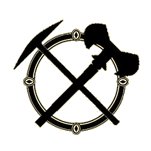
Clan Stoutaxe
Warriors
Legend among the dwarves tells of a great battle in which the stone itself was made to bleed. In the blood of the stone the first warriors of Clan Stoutaxe were forged. Clan Stoutaxe boasts the best and bravest of the dwarven warriors of Haldun. They enjoy good ale, a good story, and a good fight. Any incident that involves two or even all three of these things makes for a great day.
These dwarves are the stuff of legend, a well placed head but just as effective as a fist. At first glance the Stoutaxes as a whole seem to be an unruly, unthinking collection of brutes. In actuality the Stoutaxes are clever tacticians and honorable warriors. The Stoutaxe are not uncivilized barbarians hell bent on spilling blood, though a few of them might give you that impression. The honor and survival of the clan calls for peace and cooperation with their fellow Haldan. So perhaps it is more apt to say that while Clan Stoutaxe is not looking for a fight, they never shy away from one when it presents itself.
Before ale, before stories, before honor there is one thing that comes first to Clan Stoutaxe Family. Family is the first and foremost thing to the clan. The individual families that make up the Clan, the Clan as a whole, and the combined people of Haldun. This is where the loyalties of the clan lay. The success and survival of Haldun is a group effort and the Stoutaxe are an integral part of that group.
The clan elders would caution you though. Like everything, there are exceptions to the rule. Those members of the clan who insist on working against this group effort or who are consistently causing problems for the people of Haldun are considered traitors to home and clan.
The warriors of this clan are found in mercenary groups, in adventuring groups, and in Clan Exploration parties throughout Haldun and its surrounding areas. When it comes to careers and skill sets these dwarves do not fit into one mold like the other two clans of Haldun.
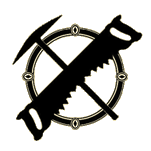
Clan Deeptunnel
Shipbuilders/Blacksmiths: NPC Only.
This clan rose to prominence in the old country centuries ago when the ore in the original dwarven mines began to run low. As other clans began searching for new areas to open mines, Clan Deeptunnel turned to another source of income. In a radical move the patron of the clan stuck a deal with House Jadyn of Haldun and a similar house in the kingdom of Paltin in which wood sealed by Clan Deeptunnel would be used in the construction of ships. Originally only two ships in each kingdom were commissioned in order to test the buoyancy of the treated wood as well as the effectiveness of the treatment.
Clan Deeptunnel had been responsible for shoring up and digging out the newest and deepest tunnels in the mines. The sealant of theirs was a clan secret that they used both on the wood beams used to shore up the tunnels while they were being dug, as well as the walls of the tunnels themselves. The experiment paid off as the dwarven treated wood proved to be better than anything House Jadyn or the Paltin house had ever used. Clan Deeptunnel stuck a deal in which members of their clan were taught the trade of the shipwrights in exchange for a set amount of the treated wood per year.
Now in Haldun Clan Deeptunnel runs its own ship yard while continuing to trade a portion of their treated wood to House Jadyn. The Clan has also become the home to hearths (dwarven families) of blacksmiths. These blacksmiths work on the tools used in ship building as well as the riggings used on the ship. They do make some weapons and armor but keep that business low key in deference to House Turas.
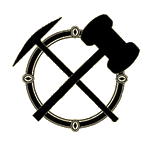
Clan Irongrinder
Stonemasons/Miners: NPC Only.
Clan Irongrinder is made of dwarves still dedicated to the old ways of stone working and mining, led by Kardik Irongrinder. Kardik�s and his kin have joined with House Delriso in Haldun. As a part of House Delriso they began a mining operation after they found a vein of precious metal in the rock quarry they had started. The Irongrinder clan is split into two groups. One works the mines, mining the precious metals. The other works the rock quarry gathering the stones needed for the work of House Delriso.
Though it is no secret they have their own mine, it is not something that House Delriso boasts. There is no need to. The metals of this mine are pure enough that they were able to easily work out a deal with House Turas.
Clan Irongrinder has always been known for its skill in shaping stone. They excel at the actual mining of ores and gems, the claiming of stone from quarries, and the actual shaping of the stones used for building.
Tough as any dwarven miners, the Irongrinders appreciate the finger things in life. Song, ale, and honor. Their main focus is on their work in the mines and quarry, but when pressed they have the inner fire found in dwarves throughout history. A fire they have had to bare to the world more than once during attempts to take over their mine. In the end though, as with Clan Deeptunnel Clan Irongrinder seeks glory in its craft not with its blades.
Half Elves:
Half elves are a very common within Haldun. While the Aredhel elves do not approve particulary much of the crossing between elf and human the Almardhel elves and the humans of Haldun pay no particular heed to half elves. Cross-breeding happens and it is nothing worth of note.
Other Races:
Czerd: NPC Only.
The czerd are a nomadic people from an icy island far away known as Kohlmadi. Many of them travel the world in search for curious trinkets and values that may provide better conditions for their people at home. The czerd are mainly a friendly people who are known to be very talented as mages or blade fighters (short swords, daggers, smaller weapons).
Of appearance the czerd are very exotic if not alien looking. They have yellow-olive leathery hide and pitch black eyes. They are tall and slim by build with pointy ears and an orc-like nose. The male breed often have dark spots. While at home the czerd dress in thick, warm hides they are often very scantily clad when around Haldun as the temperature difference on their own icy island and Haldun is fairly big.
The czerd usually have a life expectancy around 180 years.
Tiefling: Non existant.
Aasimar: Non existant.
Drow: Non existant.
Genesi: Non existant.
|
|
|
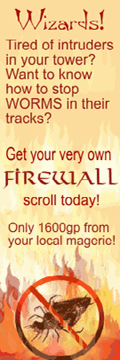
|



